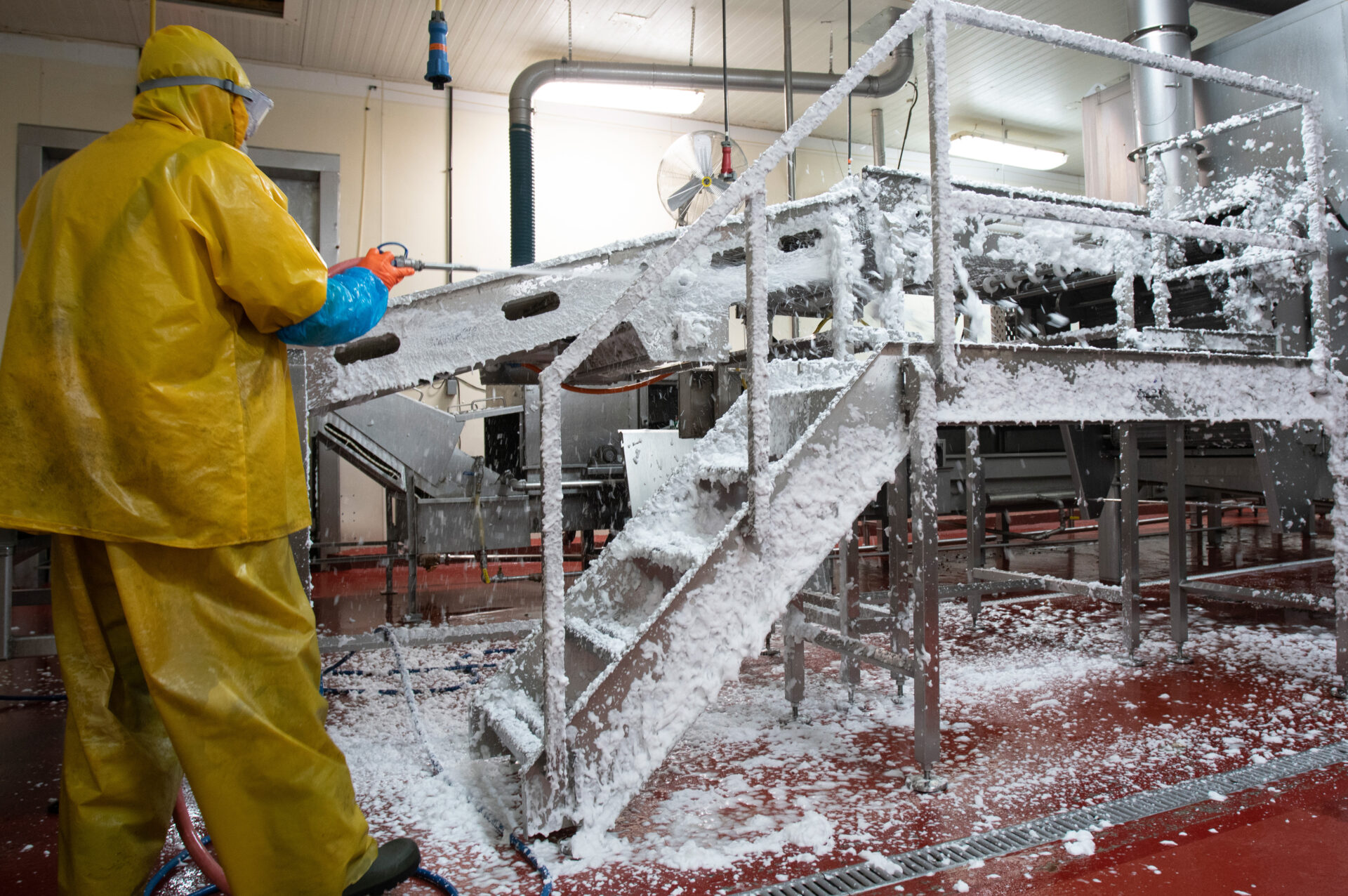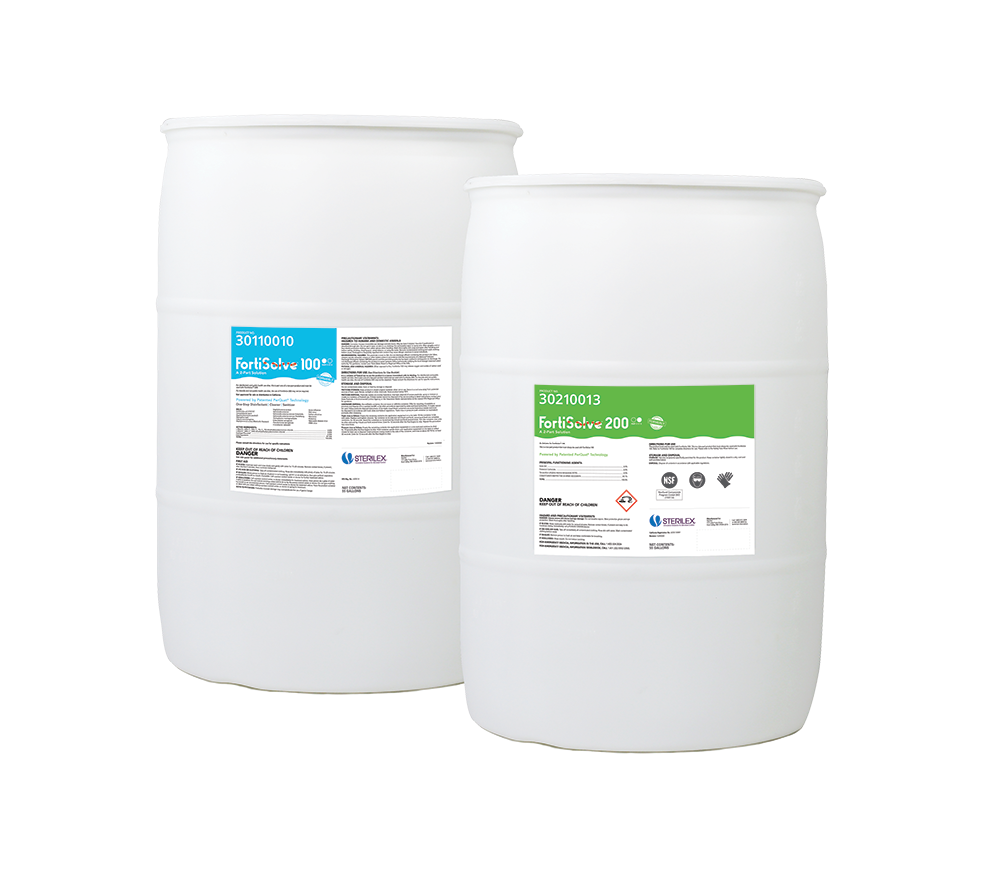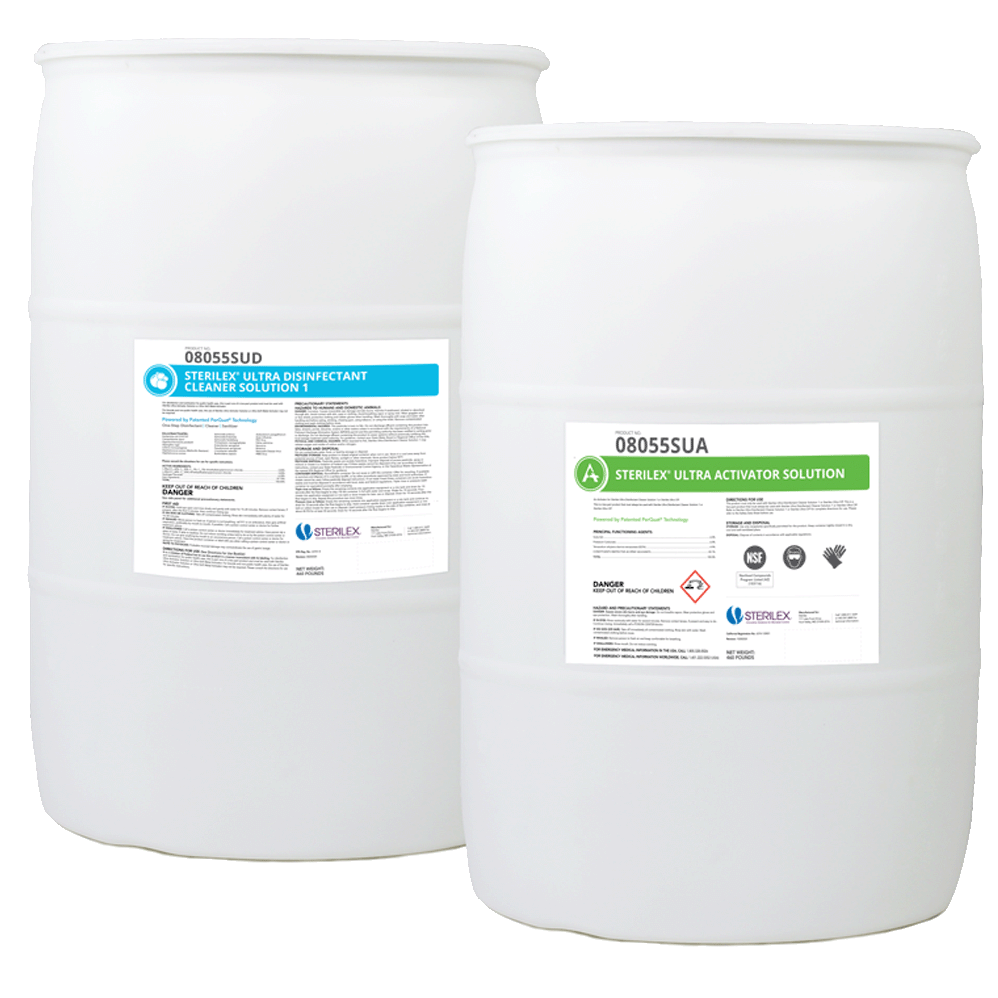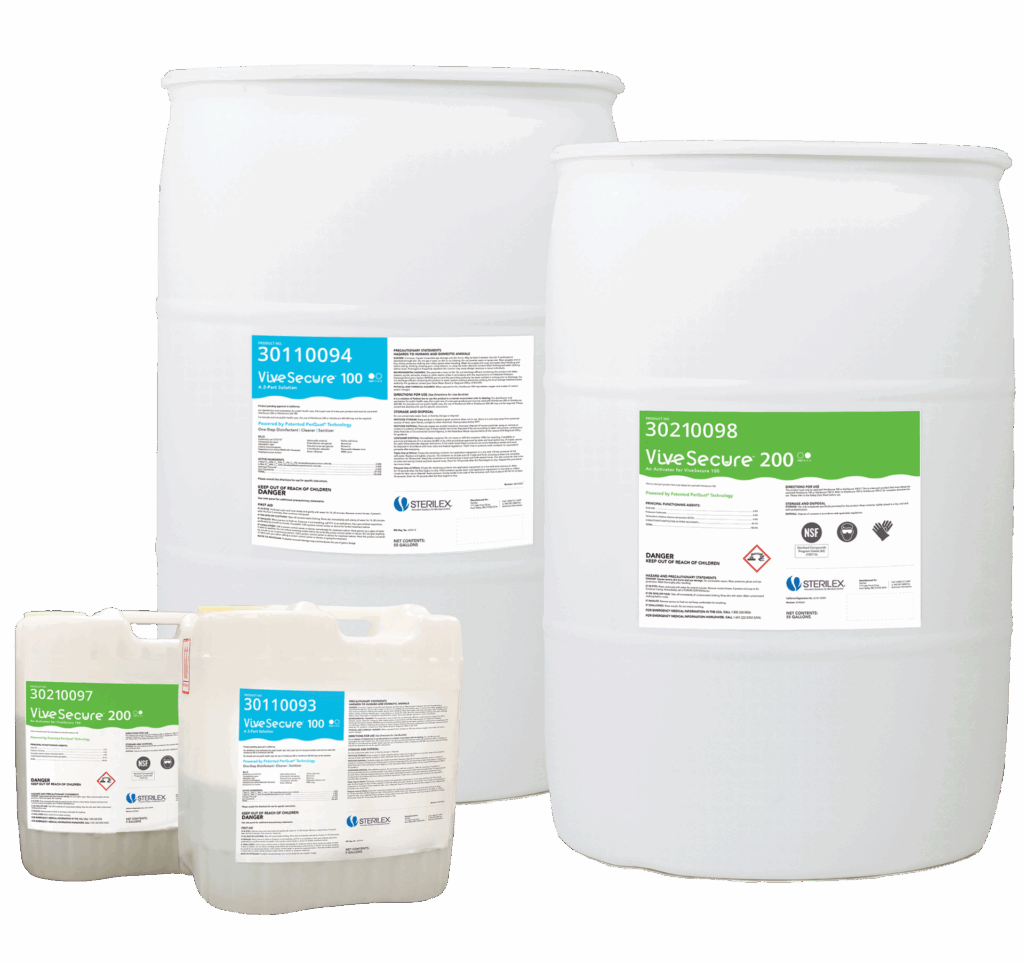Environmental Disinfection
Manage food safety threats in areas beyond Zone 1
Seek + Destroy Biofilm
Food processing facilities — especially older plants — can have an overwhelming number of areas that are ideal for pathogen and biofilm growth. Sanitary design review should extend beyond food contact surfaces to include Zones 2 and 3 with focuses on framing and support structures. General facility wear and tear creates cracks and other niches — creating a perfect home for biofilm.
Sterilex PerQuat® technology is designed to collapse the protective biofilm matrix, penetrate deep within the biofilm to kill pathogens and dissolve and physically remove the biofilm structure.
Increase Operational Efficiency + Sustainability
Establish a microbial baseline
Sterilex PerQuat chemistries are THE most trusted products when facing tough microbial challenges.
Increase Yields
Decrease the risk of product recalls, quality-related downtime and holds due to product contamination.
Prevent Cross-Contamination Risks
Eliminate food safety pathogens in areas outside of Zone 1 to keep them from coming into contact with food and food contact surfaces.
Reduce Labor and Save Time
Be confident and "get it right the first time" to get back to production faster. Environmental surfaces do not require a rinse.

"Goldilocks" Foam
Foaming is the common method of applying sanitizers and disinfectants to surfaces in food processing plants. However, not all foams are created equal. The purpose of foam is to ensure active ingredients cling to the surface. Unlike traditional high-foaming sanitation products that require lengthy contact times, Sterilex PerQuat disinfectants deliver superior results in only 10 minutes.
Problems with foam that's too thick:
- Thick foam = More Water. Thicker foam is harder to rinse and requires more water.
- Thick foam = More Chemistry. Only the chemistry touching the surface kills pathogens, not the extra foam.
- Penetration Problems. Thick foam may struggle to infiltrate and flow into harborage niches.
- Visual Deception: Thick foam may look impressive but doesn’t necessarily solve microbial issues.
Problems with foam that's too thin:
- Thin foam can dry too quickly and is not able to achieve the necessary 10-minute contact time for pathogen kill.
- Harder to see where foam is applied and ensure complete coverage.
Featured Products
Discover our best products developed for your industry or application.
Related Industries
Related Resources
Explore our blog, white papers, case studies, and more for more in-depth information and insights.


